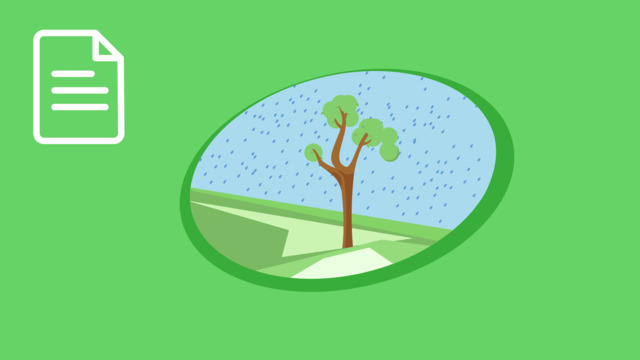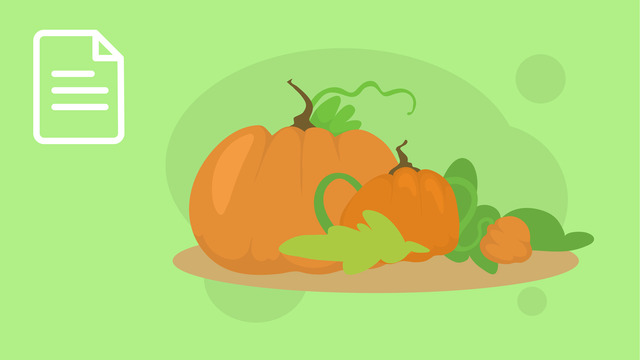Spring Season and Weather
- Spring Season and Weather - Introduction
- What is Spring?
- Spring Weather: A Closer Look
- Spring’s Impact on the Environment
- Spring’s Impact on Plants
- Spring’s Impact on Animals
Learning text on the topic Spring Season and Weather
Spring Season and Weather - Introduction
Have you ever wondered how the Earth wakes up from its long, chilly winter nap? Spring is like nature’s big stretch in the morning, full of energy, colors, and life. Let’s go on an adventure to find out all the amazing things that happen when spring arrives!
What is Spring?
Spring is the season of new beginnings. Flowers bloom, trees sprout new leaves, and animals wake up from their winter sleep. It's a time when everything in nature seems to come back to life.
Spring is one of the four seasons, marking the transition from winter's long, cold dark nights to summer's long, warm days. It's the period when days start to lengthen, temperatures start to rise, and nature bursts back into life. During spring in the Northern and Southern Hemisphere’s, the Earth tilts closer to the Sun, leading to warmer weather and sprouting new life everywhere.
Let’s test what you’ve learned about spring so far!
Spring Weather: A Closer Look
Spring weather is nature's rollercoaster, offering a mix of warm sunshine and gentle rains. Sometimes in the early days of spring, we might even get late-season snowflakes! This variety of weather is essential for kick-starting the growth cycle of plants and replenishing the Earth's water supply through rain.
Spring months can differ greatly depending on where you are on Earth. In the Northern Hemisphere, spring runs from March to May, bringing longer days and progressively warmer weather. In the Southern Hemisphere, spring occurs from September to November, when these regions experience their phase of renewal and growth after the colder months. The table below shows the typical weather patterns in Spring for the Northern Hemisphere.
| Month | Typical Spring Weather |
|---|---|
| March | Cool and rainy, sometimes last minute snow |
| April | Warmer, with more rain |
| May | Warm and sunny |
Spring’s Impact on the Environment
Spring's arrival triggers significant environmental changes.
Spring’s Impact on Plants
The warmer weather and increased sunlight activate seeds to sprout. Spring is crucial for farmers, as they plant crops that will feed us throughout the year. Some people might also plant flowers and vegetable seeds in their gardens, ready for the Spring bloom.
Pollinators like bees and butterflies become more active, playing a key role in the life cycle of plants by helping with the process of pollination. This interaction is essential for the production of fruits, vegetables, and seeds, ensuring that ecosystems thrive. An ecosystem is where all living things, such as plants and animals, interact with non-living things, such as water, dirt, and the sun.
Spring’s Impact on Animals
Spring also invites a symphony of other animal activity. Birds that migrated, or moved, to warmer climates for the winter return home for the warmer weather. Many animals give birth in the spring, taking advantage of the abundant food that has begun growing, and the milder weather which increases the chances of survival for their offspring.
| Animal Activity | Spring Impact |
|---|---|
| Bird Migration | Increases biodiversity and aids in pollination |
| Animal Births | Boosts local wildlife populations |
| Increased Pollination | Enhances plant growth and food production |
Spring Growing Experiment
If you would like an experiment to see what impact Spring has on the environment, then follow the one below!
How Well Do You Understand Spring?
Let’s test what you have learned today about Spring!
Fun Facts About Spring
- Spring comes after Winter. It's when the snow melts, and flowers start to bloom.
- In Spring, the weather gets warmer, and plants start to grow again. This is why we see so many flowers blooming.
- Many animals have babies in the Spring, and some animals that were asleep during the winter, like bears, wake up.
- Spring happens at different times around the world. In some places, it might be very warm, while in others, it might still be a bit chilly.
- Earth Day happens in Spring! It's a day where we learn about and help take care of our planet.
- Spring is often a rainy season because the warmer air can hold more moisture, which helps plants to grow.
- To see a rainbow in Spring, you need sunlight and rain. Look in the part of the sky opposite the sun when it's raining, and you might see a rainbow!
Spring Season – Summary
Key Learnings from this Text:
- Spring is the season that follows winter, bringing warmer weather, blooming flowers, and new life.
- The weather in spring can change a lot, but it usually gets warmer and rainier, which helps plants grow.
- This season is very important for the environment because it helps plants and animals to grow and thrive.
And now you know why spring is such a wonderful season! It’s a time of growth, and renewal for the environment and animals that live in it. Learn more about the other seasons with learning texts on the Summer season, Fall season, and Winter season. If you want to learn even more, then check out the text on different climates around the world!
Spring Season and Weather – Frequently Asked Questions
Spring Season and Weather exercise
-
What are some key features of spring weather?
HintsHeavy snowfall is usually more common in winter.
Hurricane season typically varies depending on the region.
In the Atlantic Basin, which includes the North Atlantic Ocean, the Caribbean Sea, and the Gulf of Mexico, hurricane season officially runs from June 1st to November 30th.
There are two correct options.
SolutionWarm sunshine and gentle rains are key features of spring weather.
-
How does spring impact the environment?
HintsSome animals emerge from hibernation during spring, becoming active and engage in various behaviors such as mating and raising offspring.
Spring's impact on plant growth, pollination, and animal activity contributes to increased biodiversity, creating a rich and varied ecosystem with a wide range of species thriving during this season.
SolutionWhen it gets sunnier and warmer outside, plants begin to wake up and grow.
This growing is helped by something very important called pollination. This is when bees, butterflies, and other helpful bugs move tiny bits from one flower to another, which helps make seeds for new plants.
Animals that were sleeping for a long time, like a big nap called hibernation, or those that traveled far away, start to come out. They look for food, find friends, and make cozy homes for their babies.
-
Why is pollination important, especially during the spring season?
HintsBees, especially honeybees and native bees, play an important role in pollination.
Pollination helps plants make seeds.
This is very important for growing foods like fruits, vegetables, and grains.
When bees and butterflies visit flowers, they help plants to create these seeds.
SolutionPollination is very important during spring for plant reproduction and food production.
It involves moving pollen from male to female flower parts, leading to seed production.
Pollinators like bees and butterflies play a key role in this process.
Pollination in spring ensures the growth of crops and helps animal homes stay alive.
-
What happens when you plant a bean?
HintsConsider the initial conditions that trigger the experiment's processes, such as the moist environment and exposure to sunlight.
Next, the seed sprouts and starts developing roots to absorb water and nutrients.
Then, the leaves form.
Solution1.The moist environment and sunlight trigger the germination of the bean seed.
2.The seed sprouts and develops roots to absorb water and nutrients from the paper towel.
3.As the sprout grows, it forms leaves and continues to develop into a bean plant.
4.Observing the process, we learn about the role of environmental factors in plant growth and how spring conditions support the growth of vegetation in the environment.
-
What happens in spring?
HintsTrees shed their leaves in a specific season when the days get shorter and the weather starts to cool down.
In spring, the Earth tilts toward the Sun, giving us longer days with more sunlight.
There are three correct answers.
SolutionIn spring:
- plants start to grow
- animals become more active
- days become longer
-
How does the tilt of the Earth contribute to the occurrence of spring in different hemispheres?
HintsThe sun feels warmer during spring, and it helps flowers and plants grow, making everything look bright and colorful.
In spring, there is more daylight.
SolutionThe Earth tilts like a spinning top. In spring, the part of the Earth where it's warmer tilts toward the sun.
This makes days longer and brings more sunshine, making it feel warmer. In different parts of the world, this happens at different times, so some places have spring when others have autumn.
It's like a big dance of sunlight and warmth that happens because of how the Earth moves around the sun!




















